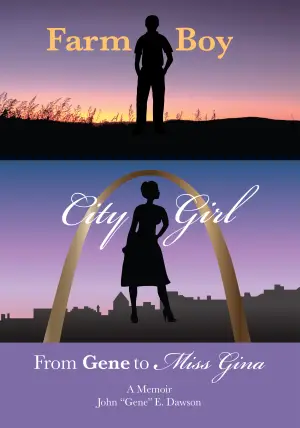Finding Hope Amidst Despair: A Review of Long Way Home by T. J. Stiles
There are books that captivate immediately, gripping you from the first line, and Long Way Home by T. J. Stiles is undeniably one of them. With its opening words—“I know it looks hopeless," I told Jimmy Barnett’s father. "But we can’t give up until Jimmy is better. Until he’s home again”—Stiles draws readers into a world steeped in the weight of despair and the flicker of hope. From that moment, I felt an immediate connection not just to the characters, but to the very essence of human resilience.
At its heart, Long Way Home weaves two intertwining narratives that capture the struggles faced during and after World War II. Peggy Serrano, a young woman scarred by her own broken home, finds sanctuary in the Barnett family. Her role as the veterinary assistant to Mr. Barnett becomes more than a job; it transforms into a mission. She is unyielding in her determination to help Jimmy, the son whose return from war has left him tormented and despondent. Peggy’s dedication to uncovering the truth behind Jimmy’s trauma showcases a profound exploration of mental health—layered with a sense of urgency and compassion.
Then there’s Gisela Wolff, a Jewish woman whose journey begins amid the horror of pre-war Germany. Her family’s desperate escape to Cuba, only to be turned away, mirrors the real-life tragedies of countless Jews. Gisela’s love story with Sam Shapiro offers a poignant counterbalance to Peggy’s struggles. Both women embody strength in vulnerability, navigating worlds where survival is a daily battle. Each character’s journey reveals a tapestry of relationships that reinforce the book’s emotional heft.
The book’s pacing is remarkable, deftly shifting between past and present, and I found myself lost in these rich narratives. The dual perspectives not only allowed for a deeper understanding of the characters’ complexities but also highlighted the enduring impact of war on those left in its wake. Stiles’s writing is both lyrical and raw, with moments of haunting beauty that linger long after reading.
One of the most memorable aspects of Long Way Home is its unflinching portrayal of faith amid chaos. It raises profound questions: How does one maintain hope when the world is unraveling? How do you reconcile your beliefs when faced with unimaginable loss? I found myself reflecting deeply on these themes, often contemplating my own beliefs in the face of adversity. Stiles doesn’t shy away from the hard truths, and this candid approach adds to the story’s authenticity.
As I closed the book, I felt both heavy-hearted and uplifted. This novel is not an easy read—its themes of trauma, faith, and emotional recovery can be triggering—but it’s one that is ultimately rewarding. I believe Long Way Home will resonate with anyone who appreciates character-driven narratives rooted in historical context. Whether you are drawn to deeply personal stories of struggle or find solace in tales of hope, this book will stay with you long after you turn the last page.
In Long Way Home, T. J. Stiles has crafted a narrative that not only tells a story but also invites reflection and conversation about faith, loss, and the unbreakable human spirit. I found myself enriched by the experience, and I hope you will too.












